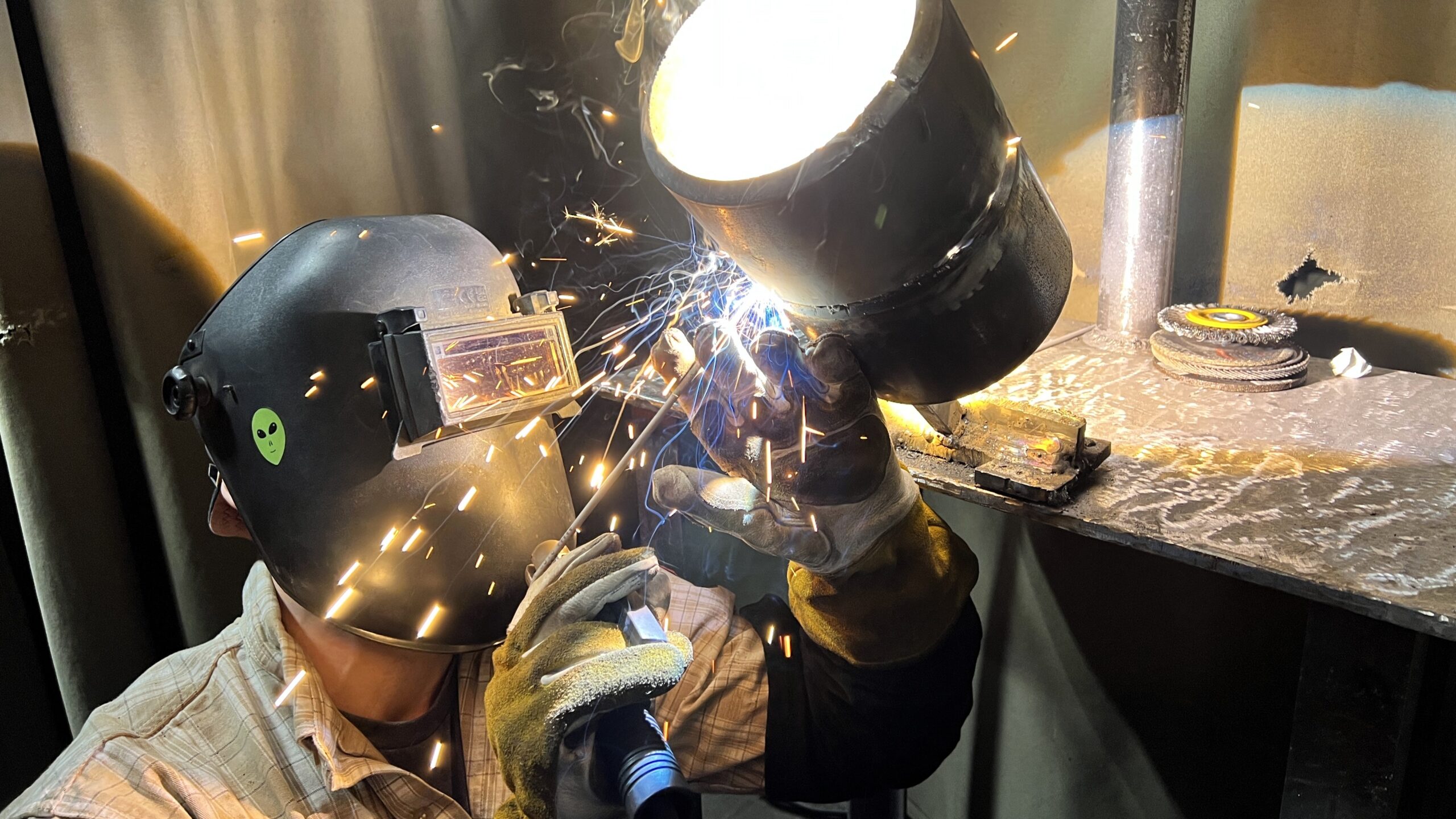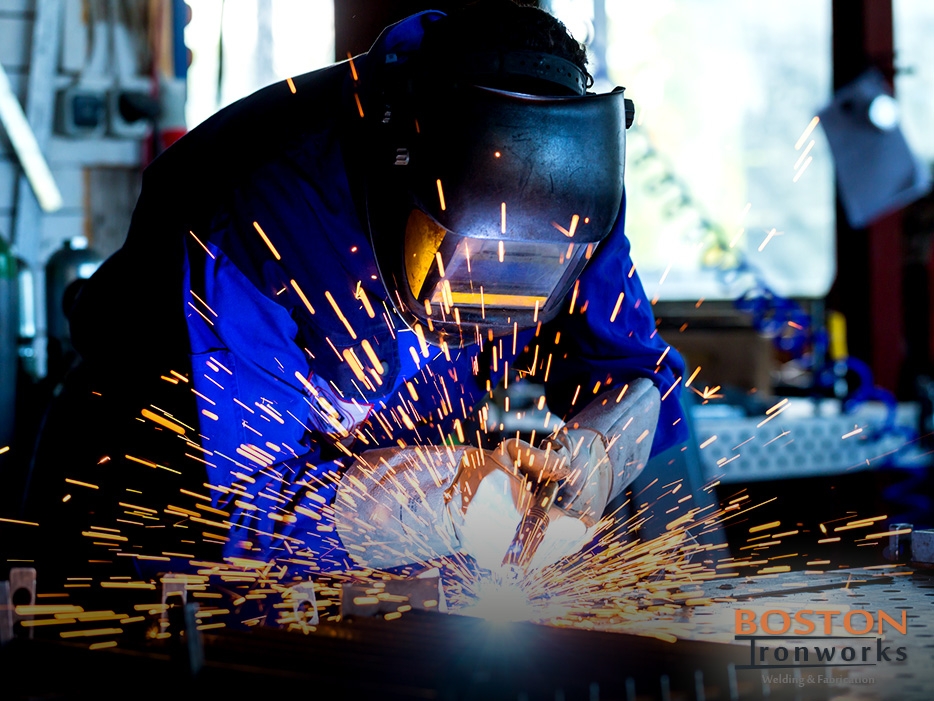Usual Welding Repair Work Issues and Exactly How to Address Them Effectively
Welding repairs often experience a variety of concerns that can threaten the honesty of the end product. Common issues include insufficient infiltration, porosity, and misalignment, amongst others. Each defect provides special difficulties that need details methods for resolution. Understanding these problems is necessary for welders intending to enhance their skills and end results. This conversation will check out these typical welding repair service problems and efficient techniques to resolve them.
Poor Infiltration
Insufficient penetration takes place when the weld steel falls short to fully fuse with the base material, leading to weak joints and potential structural failures. This concern frequently stems from not enough warm input, inaccurate electrode angle, or improper welding speed. Welders may come across inadequate penetration as a result of a miscalculation of the needed specifications for a certain product thickness or kind. Additionally, contamination on the base product's surface can impede effective bonding, aggravating the trouble. To resolve insufficient penetration, welders ought to assure ideal settings on their tools and maintain a tidy work surface. Regular examination of welds is suggested to determine any shortages early, permitting prompt adjustments and the prevention of endangered structural honesty in welded assemblies.
Porosity
Porosity is an usual problem in bonded joints that shows up as tiny gas bubbles trapped within the weld steel. This issue can jeopardize the stability of the weld, causing lowered stamina and potential failure under stress and anxiety. Montana Mobile Welding and Repair. Porosity typically occurs from contamination, wetness, or improper welding methods, which allow gases to leave right into the molten weld swimming pool. To attend to porosity, welders should ensure correct surface preparation, keep a tidy workplace, and make use of suitable welding specifications. Additionally, choosing the appropriate filler product and securing gas can alleviate gas entrapment. Regular evaluation and screening of welds can help determine porosity early, ensuring timely rehabilitative actions are taken, therefore preserving the top quality and dependability of the welded framework
Imbalance
Misalignment in welding can develop from numerous factors, including incorrect setup and thermal development. Understanding the source is necessary for reliable resolution. Several adjustment strategies are offered to realign parts and assure structural integrity.
Reasons of Imbalance
Welding imbalance typically originates from a variety of underlying problems that can compromise structural integrity. One primary reason is improper fit-up of components prior to welding, which can lead to voids and unequal surfaces. Variations in thermal growth during the welding procedure can also lead to distortion, especially if the materials being joined have various coefficients of development. In addition, inadequate fixturing and clamping may fall short to hold elements securely in location, causing movement during welding. Badly conserved devices, including welding devices and tools, may present disparities in the weld grain, further adding to imbalance. Ultimately, driver error, coming from inadequate training or experience, can also play a significant duty in creating misaligned welds.
Improvement Techniques Offered
Attending to imbalance properly requires a combination of restorative strategies customized to the particular concerns handy. One common approach is making use of jigs or components to hold parts in the correct placement throughout welding, guaranteeing regular positioning. In addition, pre-heating the materials can assist reduce distortion and boost fit-up. For substantial imbalance, mechanical adjustment methods, such as utilizing hydraulic jacks or clamps, can be utilized to remedy the setting prior to welding. Post-weld warmth therapy may likewise be essential to relieve stress and anxieties brought on by imbalance. Cautious examination and modification during the arrangement stage can avoid misalignment issues from becoming substantial troubles, promoting a smoother welding process and improving total structural honesty.
Distortion
Distortion is a typical challenge in welding that can occur from various aspects, including irregular cooling and heating. Comprehending the sources of distortion is necessary for carrying out effective avoidance techniques. Addressing this concern not only boosts structural stability however additionally enhances the total high quality of the weld.
Reasons of Distortion
When based on the intense warm of welding, products typically undertake modifications that can result in distortion. This phenomenon mostly arises from thermal growth and tightening throughout the welding procedure. As the weld location heats up, the product expands; upon air conditioning, it acquires, which can produce internal stress and anxieties. Additionally, unequal home heating across a workpiece can worsen these anxieties, leading to bending or flexing. The kind of product also plays a significant function; metals with varying thermal conductivity and coefficients of expansion might respond in a different way, leading to unpredictable distortions. Bad joint style and insufficient fixturing can contribute to imbalance throughout welding, boosting the likelihood of distortion. Comprehending these reasons is crucial for efficient welding repair work and avoidance methods.
Prevention Techniques
Effective prevention strategies for distortion throughout welding focus on controlling warmth input and making certain correct joint design. Maintaining a consistent heat input helps to decrease thermal expansion and tightening, which can bring about distortion. Using techniques such as pre-heating the workpiece can additionally minimize the temperature slope, promoting uniform home heating. Additionally, choosing appropriate joint styles, such as T-joints or lap joints, can improve stability and lower stress and anxiety focus. Carrying out appropriate fixturing to protect the workpieces in place additionally aids in keeping positioning during the welding process. Staggered welding sequences can distribute warmth a lot more uniformly, avoiding local distortion. By using these techniques, welders can significantly lower the likelihood of distortion and enhance the total high quality of their welds.
Fracturing
Cracking is a common problem encountered in welding repair services, commonly arising from various factors such as incorrect air conditioning rates, material selection, or poor joint prep work. The occurrence of splits can substantially compromise the integrity of the weld, causing potential failings during operation. To address this issue, welders need to initially evaluate the origin, guaranteeing that materials work and suitably chosen for the specific application. Furthermore, regulating the air conditioning rate during the welding process is important; fast air conditioning can cause tension and cause fracturing. Appropriate joint design and prep work also add to decreasing click to investigate the risk. Executing these methods can enhance weld high quality and resilience, inevitably decreasing the chance of splitting in completed weldments.

Insufficient Fusion
A substantial problem in welding repair work is incomplete fusion, which occurs when the weld metal does not sufficiently bond with the base material or previous weld passes - Montana Mobile Welding and Repair. This defect can bring about weaknesses in the joint, potentially endangering the stability of the bonded structure. Variables adding to incomplete blend include inadequate heat input, incorrect welding technique, and contamination of the next surfaces being signed up with. To address this problem efficiently, welders should ensure appropriate pre-weld cleansing and surface preparation, along with readjust their welding criteria to accomplish appropriate infiltration and blend. Normal examination throughout the welding procedure can likewise help recognize incomplete blend early, enabling timely corrective measures to improve the total top quality of the weld
Overheating
While welding repair work can improve architectural integrity, overheating provides a substantial obstacle that can cause product deterioration. Too much heat during welding can alter the mechanical properties of steels, causing minimized toughness, increased brittleness, and warping. This sensation is specifically critical in high-stress applications where structural dependability is vital. Identifying overheating can entail visual examinations for staining or distortion, along with checking temperature throughout the welding process. To minimize the dangers connected with getting too hot, welders ought to utilize ideal strategies, such as controlling warm input, readjusting traveling speed, and utilizing suitable filler products. In addition, applying pre- and post-weld heat therapies can aid restore material homes and enhance the general quality of the repair work, making certain long-term efficiency and safety and security.
Frequently Asked Questions
What Are the Typical Indications of a Welding Flaw?

How Can I Evaluate My Welds for High quality?
To examine welds for top quality, one can use aesthetic evaluations, ultrasonic testing, and radiographic methods. Each method ensures structural stability, determines welding and fabrication flaws, and validates adherence to defined requirements, inevitably improving the reliability of the bonded joints.
What Safety Precautions Should I Take While Welding?
When welding, one need to focus on safety by using suitable personal safety devices, guaranteeing appropriate ventilation, safeguarding flammable products away, maintaining a tidy office, and recognizing surroundings to avoid crashes and injuries.
Can I Repair a Weld Without Renovating the Entire Joint?
Repairing a weld without remodeling the whole joint is feasible, depending upon the damage (Montana Mobile Welding and Repair Belgrade). Methods such as grinding, adding filler material, or utilizing a welding procedure can successfully attend to details imperfections while preserving the bordering framework
What Equipment Are Necessary for Efficient Welding Repair Works?
Vital devices for effective welding repairs include a welding machine, cord brush, grinder, safety gear, clamps, and filler products. Each tool plays a vital duty in making certain top quality and safety and security during the repair work process. Porosity normally emerges from contamination, moisture, or inappropriate welding techniques, which permit gases to leave into the liquified weld swimming pool. Badly conserved equipment, consisting of welding equipments and tools, might present variances in the weld grain, further contributing to imbalance. When subjected to the extreme heat of welding, products commonly go through changes that can lead to distortion. Splitting is an usual issue encountered in welding repair work, frequently resulting from different factors such as incorrect air conditioning prices, product choice, or inadequate joint prep work. A considerable concern in welding repair work is insufficient fusion, which takes place when the weld steel does not sufficiently bond with the base material or previous weld passes.